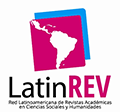The National as Transnational Spectacle: The Case of Digan lo que digan (Mario Camus, 1968)
DOI:
https://doi.org/10.22235/d.v39.4661Keywords:
cinema, song, film industry, cultural industry, festival, national identity, cultural expression, Italy, Spain, ArgentinaAbstract
This article examines a largely unexplored dimension of 1960s transnational popular cinema through the case study of Digan lo que digan (Mario Camus, 1968), a Spanish–Argentine co-production starring singer Raphael. By analyzing this film, the study seeks to shed light on the industrial, aesthetic, and cultural transformations of commercial cinema within the triangulated relations among Argentina, Spain, and Italy. It argues that film industries in these countries developed strategies of convergence with the recording and television industries, organized around international song festivals such as Sanremo and Eurovision. These events functioned as platforms for the circulation of cultural products, the construction of transnational stardom, and the promotion of shared imaginaries. The research demonstrates how these productions operated as instruments of cultural diplomacy and as vectors for identity construction within the framework of the peripheral modernization processes of the 1960s.
Downloads
References
Anderson, B. (1993). Comunidades imaginadas: reflexiones sobre el origen y la difusión del nacionalismo. Fondo de Cultura Económica.
Baczko, B. (2001). Los imaginarios sociales: memorias y esperanzas colectivas. Nueva Visión.
Benet, V. J. (2012). El cine español: una historia cultural. Paidós.
Campus, L. (2021). E Italia comenzó a volar. El festival de San Remo, el boom económico y el mito americano. Artes en Filo, 1. https://revistas.filo.uba.ar/index.php/artesenfilo/article/view/3718
Castoriadis, C. (2007). La institución imaginaria de la sociedad. Tusquets.
Dennison, S., & Lim, S. H. (2006). Situating World Cinema as a Theoretical Problem. En S. Dennison, & S. H. Lim (Eds.), Remapping World Cinema: Identity, Culture and Politics in Film. Wallflower Press.
Devoto, F. (2003). Historia de la inmigración en la Argentina. Sudamericana.
Dyer, R. (2004). Heavenly Bodies: Film Stars and Society. Routledge.
Elsaesser, T. (2005). European Cinema: Face to Face with Hollywood. Amsterdam University Press.
Ezra, E., & Rowden, T. (2006). General Introduction: What is Transnational Cinema? En E. Ezra & T. Rowden (Eds.), Transnational Cinema, the Reader. Routledge.
Fabbri, F. (2013). Il suono in cui viviamo: Saggi sulla popular music. Il Saggiatore.
Facci, S., Soddu, P., & Piloni, M. (2011). Il Festival di Sanremo. Paroli e suone raccontano la Nazione. Carocci Editore.
Fernández Jiménez, E. (2016). La pragmática de la comunicación no verbal de Raphael. AdVersuS, revista de semiótica, 31, 189-212. https://www.adversus.org/indice/nro-31/notas/XIII3109.pdf
Fernández, A., & Moya, J. C. (Eds.). (1999). La inmigración española en la Argentina. Biblos.
Fressard, M. (2006). Los imaginarios sociales contemporáneos: ensayos sobre las mutaciones socioculturales en Occidente. Ediciones La Crujía.
Frith, S. (2006). La industria de la música popular. En S. Frith, W. Straw & J. Street (Eds.), La otra historia del rock (pp. 53-86). Robinbook.
Goity, E. (2005). Las coproducciones. Una solución al problema de la crisis. En C. España (Dir.), Cine argentino. Modernidad y vanguardias 1957-1983. Vol. I. Fondo Nacional de las Artes.
Jiménez, A. (1993). Turismo: estructura y desarrollo. Mc Graw Hill.
Lanfant, M. F. (1980). El turismo en el proceso de internacionalización. Revista Internacional de Ciencias Sociales, 1(XXXII), 14-45.
Lusnich, A. L., Aisemberg, A., & Cuarterolo, A. (Eds.). (2017). Pantallas transnacionales. El cine argentino y mexicano del período clásico. Imago Mundi.
Manzano, V. (2017). La era de la juventud en Argentina. Cultura, política y sexualidad desde Perón hasta Videla. Fondo de Cultura Económica.
Martin, A. (2008). ¿Qué es el cine moderno? Uqbar.
Martín-Barbero, J. (1987). De los medios a las mediaciones. Gustavo Gili.
Miller, T., Govil, N., McMurria, J., Maxwell, R., & Wang, T. (2005). Global Hollywood 2. BFI Publishing.
Panebianco, S. (2021). Conceptualizing the Mediterranean Global South to Understand Border Crises and Human Mobility Across Borders. En P. Bilgin & M. Herz (Eds), Critical Security Studies in the Global South. Palgrave MacMillan.
Party, D. (2020). Raphael es diferente: la canción melódica española en el tardofranquismo. Boletín del Instituto de Estudios Giennenses, 221, 505-526. https://dialnet.unirioja.es/servlet/articulo?codigo=7865633
Prashad, V. (2012). The Poorer Nations: A Possible History of the Global South. Verso.
Shohat, E., & Stam, R. (Eds.). (2003). Multiculturalism, Postcoloniality and Transnational Media. Rutgers University Press.
Urry, J. (2002). The Tourist Gaze. Sage.
Viva Raphael - Canciones. (2015, 4 de abril). Raphael en Sábados circulares con Pipo Mancera. 1968 [Video]. YouTube. https://www.youtube.com/watch?v=XDDikdXXfSI
Wallerstein, I. (2006). Análisis de sistemas-mundo: Una introducción. Siglo XXI Editores.
Williams, R. (1977). Marxism and Literature. Oxford University Press.
Published
How to Cite
Issue
Section
License
Copyright (c) 2025 Dixit

This work is licensed under a Creative Commons Attribution 4.0 International License.
From issue number 32 onwards all contents are licensed under the Creative Commons Attribution 4.0 International License (CC BY 4.0).
Issues number 29-31 are licensed under the Creative Commons Attribution-NonCommercial 4.0 International License.
The contents corresponding to number 28 and earlier editions are under the Creative Commons Attribution-NonCommercial-ShareAlike 4.0 International License.


















